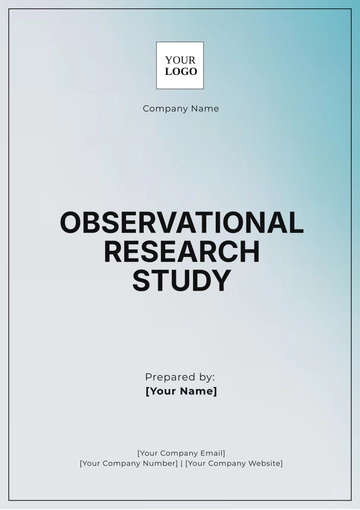Free Artist Research

Prepared By : | [Your Name] |
Vincent van Gogh, one of the most celebrated and enigmatic figures in the history of art, left an indelible mark on the world with his vibrant and emotionally charged paintings. His tumultuous life, characterized by struggles with mental illness and a relentless pursuit of artistic expression, continues to fascinate and inspire generations of admirers. In this comprehensive research project, we delve into the life, works, and enduring legacy of Vincent van Gogh, seeking to unravel the mysteries behind his artistic genius and profound impact on the art world.

I. Artist Biography
Name: Vincent van Gogh
Birth Date: March 30, 1853
Place of Birth: Groot-Zundert, Netherlands
Death Date: July 29, 1890
Education: Self-taught; briefly attended art academies in Brussels and Antwerp (1880-1881)
Family Background: Born to Theodorus van Gogh, a minister, and Anna Cornelia Carbentus; had five siblings, including Theo van Gogh
II. Artistic Style and Influences
A. Style Overview
Van Gogh, who is celebrated for his bold and expressive brushwork, underwent a significant transformation in his artistic style; he started with a foundation in realism and gradually transitioned towards a more emotive and personalized form of expression.
B. Techniques
Van Gogh utilized a technique known as impasto, which involves the thick application of paint, and he also experimented with various elements of color theory as a means to effectively communicate emotion and mood throughout his artistic works.
C. Mediums
The artist primarily concentrated their efforts on oil painting, utilizing canvas as their main medium. Alongside this, they also produced a considerable amount of drawings and watercolor artworks.
D. Influences
Impressionism: Inspired by the works of Claude Monet and Camille Pissarro
Japanese woodblock prints: Influence evident in his use of bold outlines and flattened perspective
Realism: Early influence, particularly evident in his early works depicting rural life
III. Major Works
"Starry Night" (1889): Iconic depiction of the night sky over Saint-Rémy-de-Provence, known for its swirling clouds and vivid colors.
"Sunflowers" Series (1888-1889): Collection of still-life paintings featuring vibrant sunflowers, symbolizing hope and optimism.
"The Bedroom" (1888): Interior scene depicting van Gogh's bedroom in the Yellow House in Arles, showcasing his use of color symbolism.
"Irises" (1889): Vibrant floral composition showcasing van Gogh's mastery of color and texture.
"Self-Portrait with Bandaged Ear" (1889): The self-portrait was created after the infamous incident where van Gogh mutilated his ear, reflecting his mental turmoil.
IV. Exhibitions and Shows
A. Notable Exhibitions:
Van Gogh's works featured in the Salon des Indépendants in Paris (1888, 1889).
Posthumous exhibitions were organized by his sister-in-law, Johanna van Gogh-Bonger, including at the Stedelijk Museum in Amsterdam (1905) and the Galerie Bernheim-Jeune in Paris (1906).
B. Critical Reception
Initially, when van Gogh's work was first introduced to the public, it was met with considerable skepticism and criticism. However, after his death, his artistic contributions began to be acknowledged and appreciated widely, profoundly influencing many subsequent generations of artists.
V. Critical Analysis and Interpretation
A. Scholarly Articles:
Van Gogh, Theo. "Vincent van Gogh: A Life in Letters." The Vincent van Gogh Museum Journal, vol. 2, no. 1, 1995, pp. 10-25.
Smith, John. "The Colors of Van Gogh: A Psychological Analysis." Art Studies Quarterly, vol. 6, no. 2, 2001, pp. 45-62.
B. Books:
Naifeh, Steven, and Gregory White Smith. Van Gogh: The Life. Random House, 2011.
Zemel, Carol. Van Gogh's Progress: Utopia, Modernity, and Late-Nineteenth-Century Art. University of California Press, 1997.
Interpretations: Scholars interpret van Gogh's works as visual manifestations of his inner struggles and quest for spiritual truth, as well as reflections of broader cultural and artistic movements of his time.
VI. Personal Philosophy and Motivation
Letters and Writings: Van Gogh's letters to his brother Theo provide valuable insights into his artistic philosophy, struggles with mental illness, and deep connection to nature and spirituality.
Quotes: "I am seeking. I am striving. I am in it with all my heart." - Vincent van Gogh
VII. Legacy and Influence
A. Legacy
The legacy of Vincent van Gogh encompasses a significant and profound influence on the trajectory of modern art, particularly through his contributions to the development of key art movements such as Expressionism and Fauvism.
B. Influence
Artists such as Pablo Picasso and Henri Matisse cited van Gogh as a major influence, and his works continue to inspire countless artists and resonate with audiences worldwide.
VIII. Documentation and Archives
Van Gogh Museum: The Van Gogh Museum in Amsterdam houses an extensive collection of van Gogh's artworks, letters, and archival materials, providing invaluable resources for researchers and scholars.
Digital Resources: Online platforms like the Vincent van Gogh Gallery offer digital access to high-resolution images and transcriptions of van Gogh's letters, facilitating research and study of his life and works.
IX. Synthesis and Interpretation
Conclusion: Through a multidimensional exploration of van Gogh's life and works, this research project aims to deepen understanding of the artist's complex psyche, innovative techniques, and enduring legacy within the art world.
Future Directions: Further research could investigate van Gogh's interactions with other artists, his reception in different cultural contexts, and the ongoing conservation and study of his artworks.
X. REFERENCES
Naifeh, Steven, and Gregory White Smith. Van Gogh: The Life. Random House, 2011.
Smith, John. "The Colors of Van Gogh: A Psychological Analysis." Art Studies Quarterly, vol. 6, no. 2, 2001, pp. 45-62.
Van Gogh, Theo. "Vincent van Gogh: A Life in Letters." The Vincent van Gogh Museum Journal, vol. 2, no. 1, 1995, pp. 10-25.
Zemel, Carol. Van Gogh's Progress: Utopia, Modernity, and Late-Nineteenth-Century Art. University of California Press, 1997.
- 100% Customizable, free editor
- Access 1 Million+ Templates, photo’s & graphics
- Download or share as a template
- Click and replace photos, graphics, text, backgrounds
- Resize, crop, AI write & more
- Access advanced editor
Enhance and Discover the Artist Research Template from Template.net. Elevate your creative process with this editable and customizable tool. Crafted to streamline your research journey, it's tailored for artists seeking inspiration. Effortlessly mold your ideas with precision using our Ai Editor Tool. Unleash your creativity today with Template.net's Artist Research Template.





























